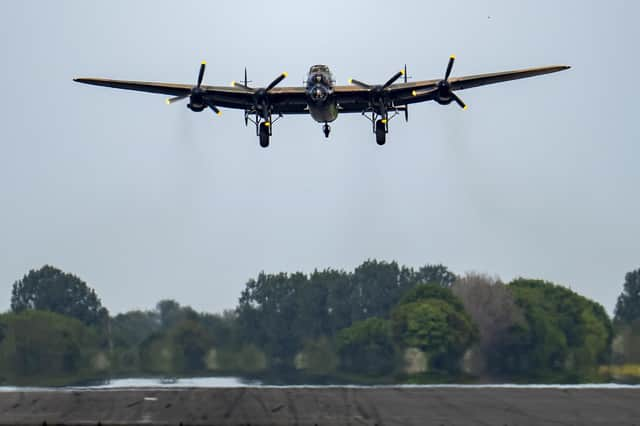Dambusters anniversary: The Scots who took part in daring raid 80 years ago


One of only two remaining airworthy Lancaster bombers flew over several airfields to mark the 80th anniversary of the famous Dambusters raid.
The Battle of Britain Memorial Flight (BBMF) plane PA474 was seen over 28 former air bases in Lincolnshire, where the renowned 617 squadron was originally formed under great secrecy ahead of the daring ‘bouncing bomb’ attack on the Mohne, Eder and Sorpe dams in Germany. The aim of the vital operation was to disrupt industry in a key area for the manufacture of Germany’s war munitions.
Advertisement
Hide AdAdvertisement
Hide AdThe anniversary yesterday was the first to be marked without any surviving members of the daring mission – the last Dambuster, George Leonard “Johnny” Johnson, died last December at the age of 101.
His crew was one of five selected to target the Sorpe dam, and had to fly along its length at as low an altitude as possible and drop the bomb in the centre.
Although Mr Johnson’s aircrew did not destroy their target, the Germans had to empty the dam to repair it, causing major disruption to the war effort.
Asked in 2018 about the most significant thing he remembered from the night of the raids, he said: “It was an exhilarating feeling, flying low level into the Ruhr Valley in bright moonlight.”
On May 16 and 17, 1943, a total of 133 Allied air crew left for the raid on board 19 Lancaster bombers, carrying Barnes Wallis’s specially-adapted bouncing bombs – that looked like “glorified dustbins”, according to Mr Johnson – led by Wing Commander Guy Gibson.
Fifty-three men were killed and three were captured.
Among the dead were three Scottish airmen who died together on the same aircraft as it plunged into the sea off the Dutch coast. Two of the men are still listed as missing.
The Avro Lancaster AJ-K was struck by German anti-aircraft fire around 18 miles from the coast, with all seven men onboard killed.
There are no known graves for flight engineer Sergeant Alastair Taylor, of Alves, Moray or front gunner Sergeant Charles McAllister Jarvie, from Glasgow, with both airmen commemorated at the Runnymede Air Forces Memorial as ‘missing’.
Advertisement
Hide AdAdvertisement
Hide AdOf the seven crew, only the body of rear gunner Flight Sergeant James McDowell, also of Glasgow, was recovered.
The three men were among six Scots killed during the operation, with six more surviving.
Killed in action was Pilot Officer George Gregory, from Govan, a front gunner in the first wave.
Sergeant John Kinnear, a flight engineer originally from Newport in Fife, was killed in action on May 17. He was in the first wave of Lancasters deployed in the operation but it hit a pylon and crashed near Marbeck.
Flight Sergeant Thomas Johnston, a bomb aimer from Bellshill, flew in the third wave but was killed on the outward journey.
Flight Officer Grant Rumbles, from Kirtlebridge in Dumfriesshire, survived the Dams raid. The navigator was in the second wave, but his aircraft was damaged by flak on outward flight and returned to base with mine intact. He died in 1988 in Port Elizabeth, South Africa.
Also forced to return from the raid was Sergeant Robert Paterson, of Edinburgh, a flight engineer, who returned to base after his flight was marred by flack damage and poor weather.
Flight Officer Richard Macfarlane, who was born in Glasgow also survived. He was killed in action in December 1943.
Advertisement
Hide AdAdvertisement
Hide AdPilot Officer George Andrew Deering, who was born in Kirkintilloch, also survived. as did Flight Sergeant George Chalmers, a wireless operator from Peterhead. Flight Engineer Robert Henderson, from Tarbrax, North Lanarkshire, returned safely in the first aircraft to attack Eder Dam.
Comments
Want to join the conversation? Please or to comment on this article.